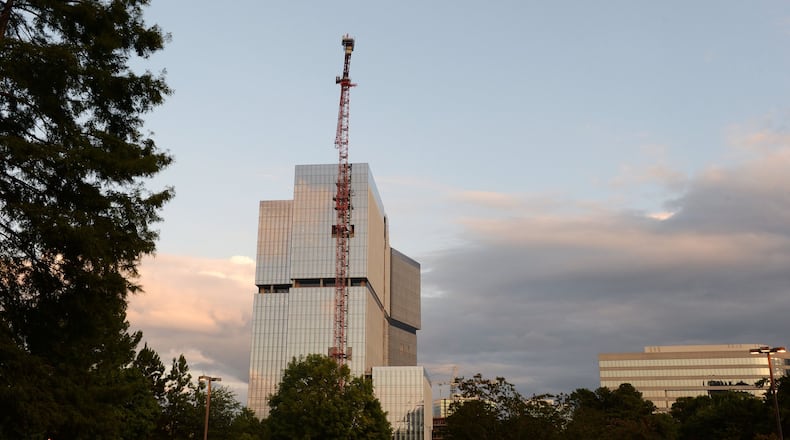State Farm will receive nearly $34 million in tax breaks to build two more office towers in Dunwoody.
The deal commits the insurance company to continue construction of its regional hub, where a total of 7,500 people will work in three towers near Perimeter Mall and the Dunwoody MARTA station. The Dunwoody Development Authority unanimously approved the property tax discount Wednesday.
State Farm recently completed construction of the first tower at a cost of $175 million. The company had requested $15 million in incentives for that first building, as well, but none was awarded.
Authority members said they opposed giving a tax benefit for a building that's already finished. Tax incentives are usually designed to encourage businesses to relocate or expand.
When State Farm announced the project in February 2014, it didn't ask for tax benefits. But awarding public money to the development will help ensure State Farm doesn't change its business plans, said Jim Gaddis, chairman of the Dunwoody Development Authority.
“We locked in the project by allowing this abatement, so we’ve reduced the risk of the project never happening,” Gaddis said.
The first office tower, with 13 stories of office space and eight levels of above-grade parking, will become the workplace for about 2,500 State Farm employees. The next two towers will house about 5,000 more employees.
Only about 2,200 of these jobs will be new to Dunwoody — the rest exist in other buildings in the city, according to a Georgia Tech fiscal impact study.
The next two towers will cost between $420 million and $460 million.
Bill McCahan, a member of the Dunwoody Development Authority, said he was concerned that the tax breaks were being given without a requirement that the buildings be constructed faster.
“We’re not creating goals that are incenting people to do things earlier,” he said at Wednesday’s meeting. “It just seems like the goals aren’t very aggressive.”
In response, the site’s developer, Dallas-based KDC, agreed to demolish the existing Hammond Exchange building on the site by the end of 2017, which will put the two towers on schedule to be completed in 2021 and 2022.
“We are proud of how this project positively impacts the Dunwoody community, and we appreciate this outcome,” Justin Tomczak, a State Farm spokesman, wrote in a statement.
State Farm will also invest about $50 million in public improvements associated with the development, including a pedestrian bridge to MARTA, road construction and a trail, he said.
Public financial support for business development projects like State Farm’s comes from a discount on property taxes the company would otherwise pay to the DeKalb school system, county government and city government.
State Farm received the highest level of tax incentive available from the Dunwoody Development Authority based on its large investment. The company will get a 95 percent discount on its property taxes in the first year of the deal, with the value of the incentive decreasing over a decade until the development is fully taxed.
Overall, State Farm will still pay $85 million in property taxes in the period it’s receiving tax breaks, according to the fiscal impact study.
“It brings a lot of benefits to Dunwoody,” Gaddis said. “It’s always good to have more jobs in Dunwoody. It’s on the MARTA tracks so we improve ridership on MARTA without all the negative effects of traffic. It adds green space. It adds premium office space.”
About the Author
Keep Reading
The Latest
Featured




